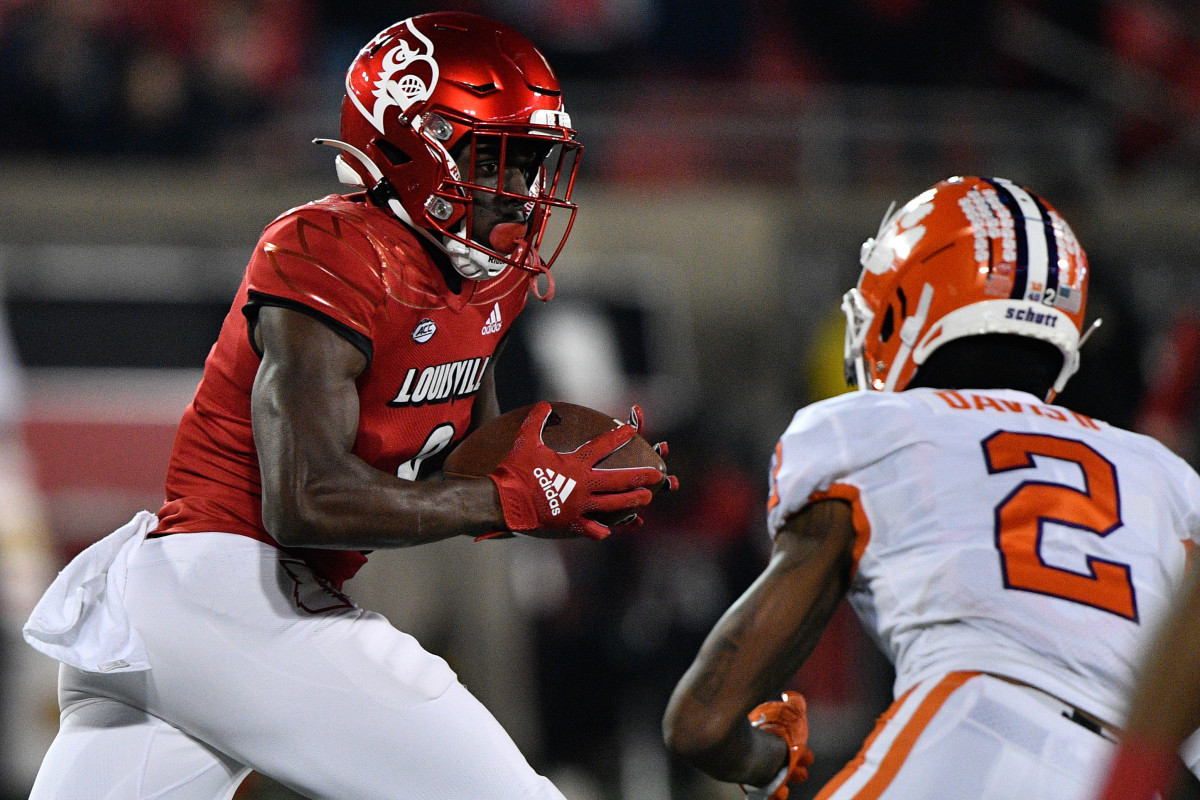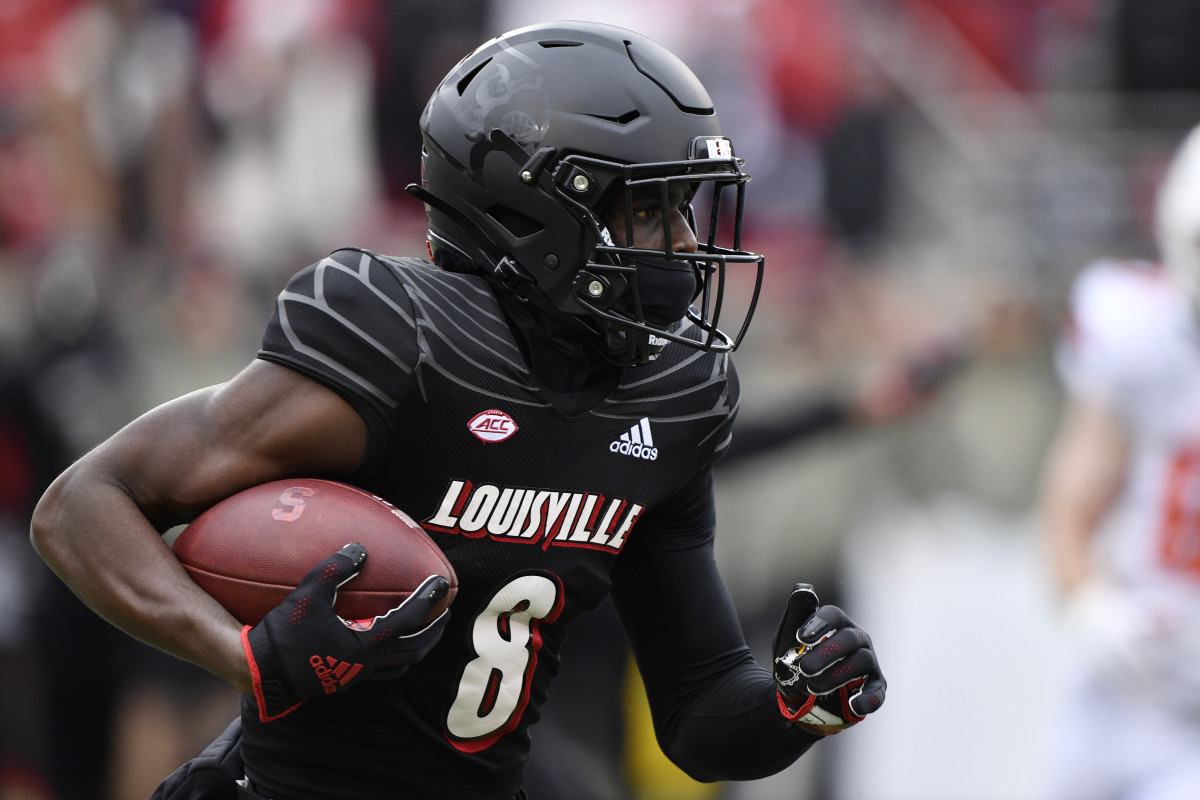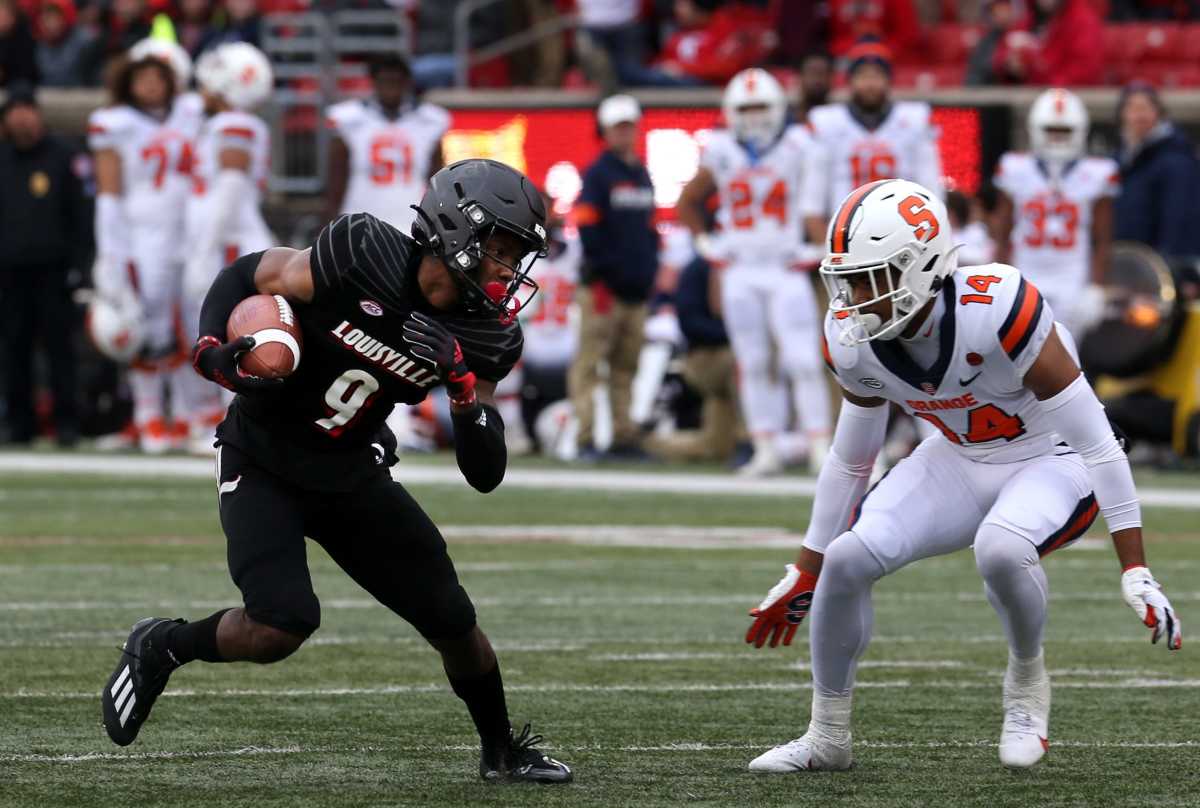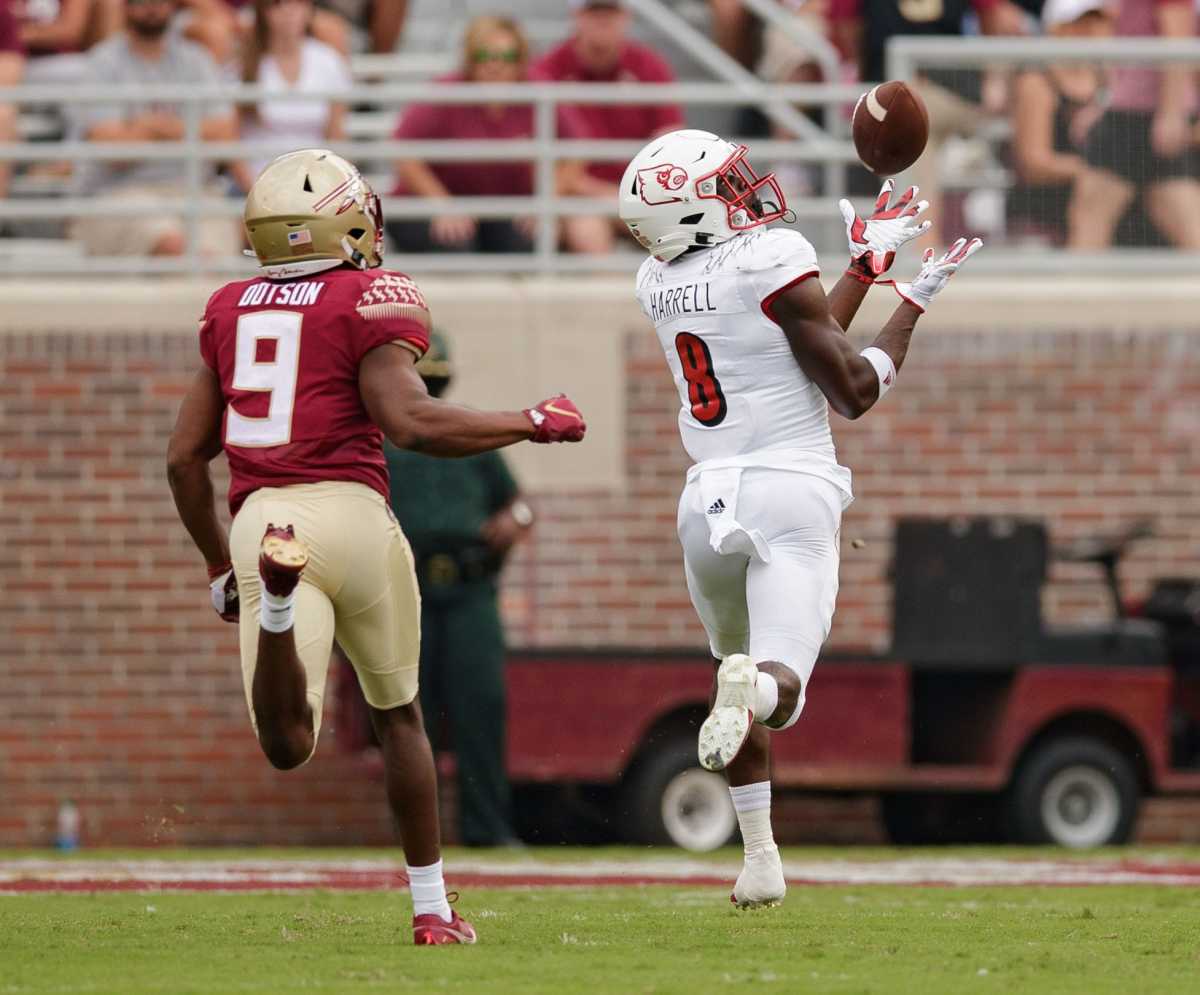How Tyler Harrell Will Help Alabama's Passing Game This Season
Before he broke onto the scene last season, you’d be hardpressed to find an Alabama fan who had heard of Tyler Harrell. That’s not even a knock on the Crimson Tide faithful. At that point, the receiver had appeared in just nine games over his first three years at Louisville.
As a three-star recruit in the 2018 class, Harrell was offered a track and field scholarship by his hometown Miami Hurricanes. However, that opportunity didn’t extend over to the football field, causing him to commit to Louisville — one of the few Power Five programs to realize his potential from an early age.
So why all the hype around the redshirt junior following his announced transfer to Alabama on Friday? It starts with his blazing speed.
Harrell is easily one of the fastest players in college football. He officially registered a 4.24 time in the 40-yard dash at a Louisville pro day last year. According to Louisville Report, he previously clocked a hand-timed 4.19 during his time with the Cardinals.
After a slow start to his career, Harrell’s speed finally began to produce results on the field last year as he led Louisville averaging 29.06 yards per catch, pulling in 18 receptions for 523 yards and a team-high six touchdowns. The explosive receiver is expected to add to those numbers at Alabama where he’ll be catching passes from the reigning Heisman Trophy winner, Bryce Young.
Here’s a look at some of the ways Harrell could help the Crimson Tide this season.
Another trusty veteran
Despite serving as one of Louisville’s top receivers, Harrell recorded just two starts during his breakout season last year. Still, the redshirt junior will offer a much-needed veteran presence to an Alabama unit that saw starters Jameson Williams, John Metchie III and Slade Bolden declare for the NFL draft this offseason.
Alabama was able to replenish some of its lost experience earlier this year with the addition of Georgia transfer Jermaine Burton, who has started a combined 15 games for the Bulldogs over the past two seasons. Outside of that, the Crimson Tide returns two other receivers with starting experience in sophomores Ja’Corey Brooks (two starts) and JoJo Earle (one start).
Last season, Alabama wasn’t able to overcome late season-ending injuries to Metchie and Williams as its inexperienced receivers were unable to answer the bell during the national championship loss to Georgia. While the Crimson Tide isn’t swarming with experience this season, it should be in better shape to overcome a costly injury with the addition of Harell.
The Louisville transfer is one of just four scholarship upperclassmen in the unit, joining juniors Burton, Traeshon Holden and Thaiu Jones-Bell.
Big-play ability
Williams served as Alabama’s home-run threat last year, posting a team-leading 19.9 yards per catch. Burton, who averaged 19.12 yards per reception for Georgia last season, was brought on to restore the Crimson Tide’s big-play ability. So was Alabama’s five-man receiver class featuring speedsters Aaron Anderson, Isaiah Bond, Kendrick Law, Kobe Prentice and Shazz Preston. However, none of those options quite match Harrell’s vertical threat.
According to Pro Football Focus, eight of Harrell’s 18 receptions last season came on passes that traveled 20 or more yards through the air. Those deep connections resulted in 353 yards and saw the speedy receiver find the end zone five times.
Quick clip of new Alabama transfer commit Tyler Harrell.
— TorresOnBama (@TorresonBama) April 22, 2022
It's officially time to start feeling bad for opposing defenses pic.twitter.com/CwxMF0CXM0
Harrell was targeted 20 times on such passes, giving him a 40% success rate in reeling in deep throws. For perspective, Williams caught 13 of 32 deep targets (40.6%) last season, resulting in 671 yards and eight touchdowns. Given the similar reception percentage between the two, it’s reasonable to expect Harrell’s big-play production to improve in Alabama’s offense this season.
Opening things up
Harrell’s big-play ability figures to affect opposing defenses even when the ball doesn’t come his way. With defensive backs forced to respect the threat he poses down the field, the track star should be able to open things up for his fellow receivers on underneath routes.
This could be key for Brooks, who recorded eight of his 15 receptions on screen passes behind the line of scrimmage last season. Alabama could essentially use Harrell as a decoy, sending him deep while keeping Brooks at the line of scrimmage. From there, Young can zip a quick pass out to the sophomore and let him use his 6-foot-2, 196-pound frame to his advantage.
Earle also stands to take advantage of the extra space. During his freshman season last year, the shifty slot receiver recorded 11 of his 12 receptions on passes inside of 10 yards, averaging 7.5 yards after the catch.
In addition, Alabama has several capable pass-catchers out of the backfield who should benefit from preoccupied defenders. Georgia Tech transfer Jahmyr Gibbs recorded 36 receptions for 470 yards and two touchdowns last season while returning junior Jase McClellan caught 10 passes for 97 yards and three scores before suffering a season-ending knee injury in Week 5.
The same thing goes for JoJo Earle, who caught 11 of his 12 receptions from inside of 10 yards. Alabama also has several capable pass-catchers out of the backfield which should have more space to operate. pic.twitter.com/nfsCa6Io0p
— Tony Tsoukalas (@Tony_Tsoukalas) April 22, 2022
Gallery: Tyler Harrell




